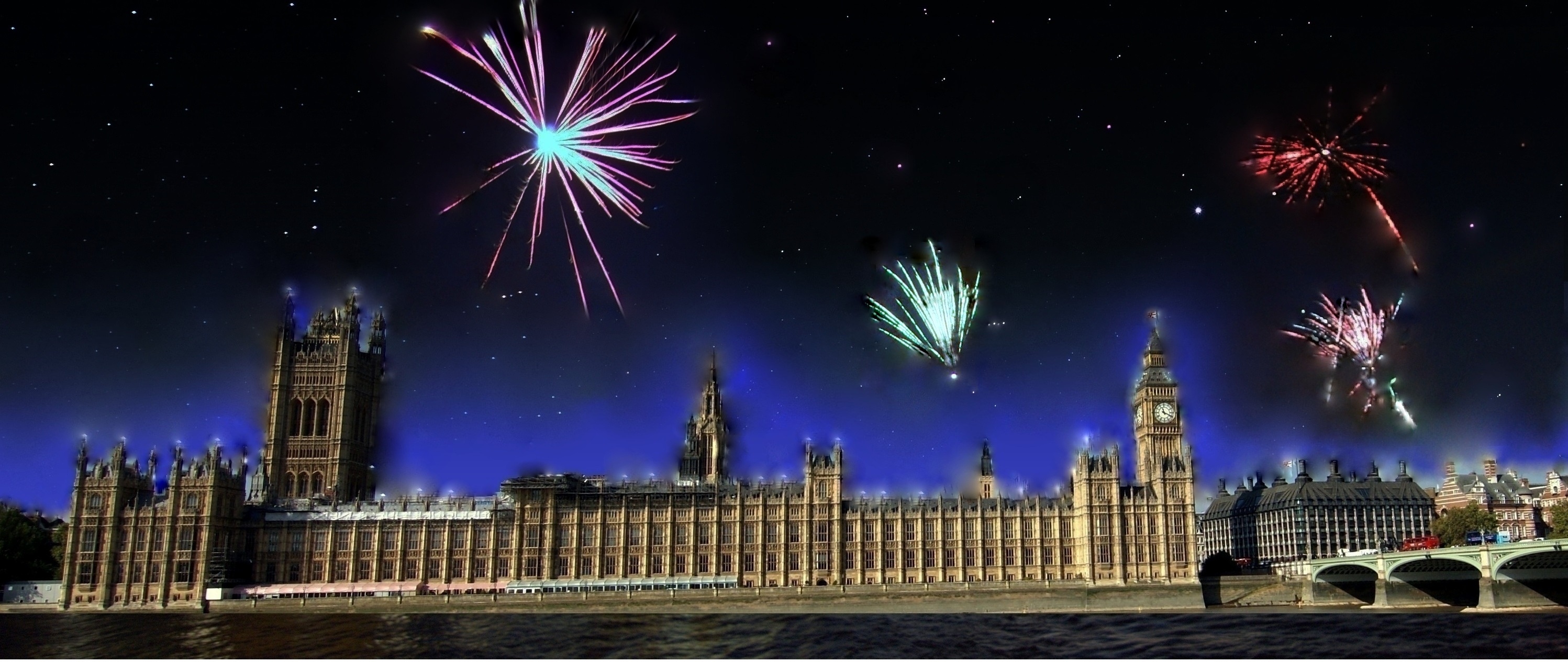If you’ve been to Great Britain during the first few days of November, you might have noticed fireworks going off and maybe even come across a few bonfires in the evening hours. Like me, you might have had trouble finding out what it’s all about. People don’t always know why or what they’re celebrating. They just go and join the fun. But I usually like to know the reason for these kinds of festivities.
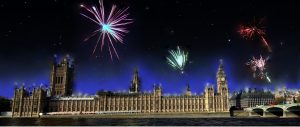
A guy named Fawkes
It all started with a guy. To be precise: with Guy Fawkes. This fellow was “caught in the act” when guarding barrels of powder that had been placed in a cellar beneath the Parliament in order to blow up King James I of England and replace him with a Catholic King. But let’s see how the story began.
Guy Fawkes had presumably been very easily influenced by others all his life. In May 1604, he and other conspirators agreed to join in the now so-called “gunpowder conspiracy”. Fawkes then assumed the name John Johnson, as a servant of Thomas Percy, one of the conspirators. In early December 1604, he started to supervise work in a mine to prepare the gunpowder barrels. In 1605, they hired a cellar beneath Parliament. Fawkes helped to fill the room with barrels of powder and, because of his munitions experience, he was given the task of setting light to the powder. One day before his capture authorities discovered him, but let him leave because they hadn’t seen the barrels yet. But on Tuesday, 5 November, when he once again returned to the cellar, he was arrested. A Westminster magistrate had previously found the gunpowder during a meticulous search. Fawkes was tortured and finally gave away the plan as well as the names of the other conspirators. On Friday, 31 January 1606 he and three others were hanged.
Gunpowder Treason Day
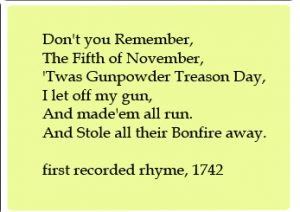 The very first celebration of the failed gunpowder treason took place right after Guy Fawkes was arrested. The King’s Council had allowed the public to celebrate the King’s survival with bonfires. The following year Parliament passed the Observance of 5th November Act (also known as “Thanksgiving Act”) in order to remember the failed attempt to murder King James I of England. What the celebrations were like during the first years can only be speculated, though we know that at least in some communities music and artillery salutes were part of the festivities. The events were mainly for local dignitaries to start with, but were extended steadily.
The very first celebration of the failed gunpowder treason took place right after Guy Fawkes was arrested. The King’s Council had allowed the public to celebrate the King’s survival with bonfires. The following year Parliament passed the Observance of 5th November Act (also known as “Thanksgiving Act”) in order to remember the failed attempt to murder King James I of England. What the celebrations were like during the first years can only be speculated, though we know that at least in some communities music and artillery salutes were part of the festivities. The events were mainly for local dignitaries to start with, but were extended steadily.
While at first the celebrations demonstrated an anti-Catholic sentiment – very early on, effigies of hate-figures, e.g. the pope or the devil, were burnt -, it gradually changed to large organised events, centred on bonfires and extravagant firework displays.
Guy Fawkes Day
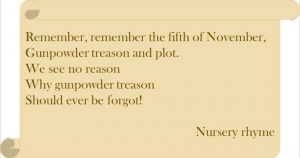 Today, every kid knows the name. “Remember, remember…” is a nursery rhyme every kid in Great Britain is bound to hear at some point. Still, when you ask people about the reason for bonfires and firework – more often than not the question results in puzzled looks. People do have a vague idea, of course, but nowadays people seem to be more interested in partying than knowing what makes this date special in the first place.
Today, every kid knows the name. “Remember, remember…” is a nursery rhyme every kid in Great Britain is bound to hear at some point. Still, when you ask people about the reason for bonfires and firework – more often than not the question results in puzzled looks. People do have a vague idea, of course, but nowadays people seem to be more interested in partying than knowing what makes this date special in the first place.
Partly this might be because society and circumstances change over time. There still might be the odd resentment between Catholics and Protestants, but they’re mostly well concealed in history. What’s more, the name of the day changed in the late eighteenth century, which might have helped to keep the true reason for the celebration in the dark. Even though the story is kind of known, people are lost regarding the specifics. 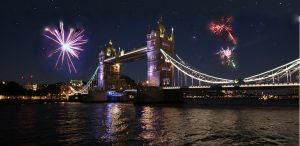
Maybe we should not only celebrate festivities, but also try and remember the story behind the party. Otherwise we might lose part of our culture and customs that we wouldn’t want to. After all, even the nursery rhyme says “Remember, remember, the fifth of November…”.
Text: Angie Czygann | Pictures: Manfred Czygann

